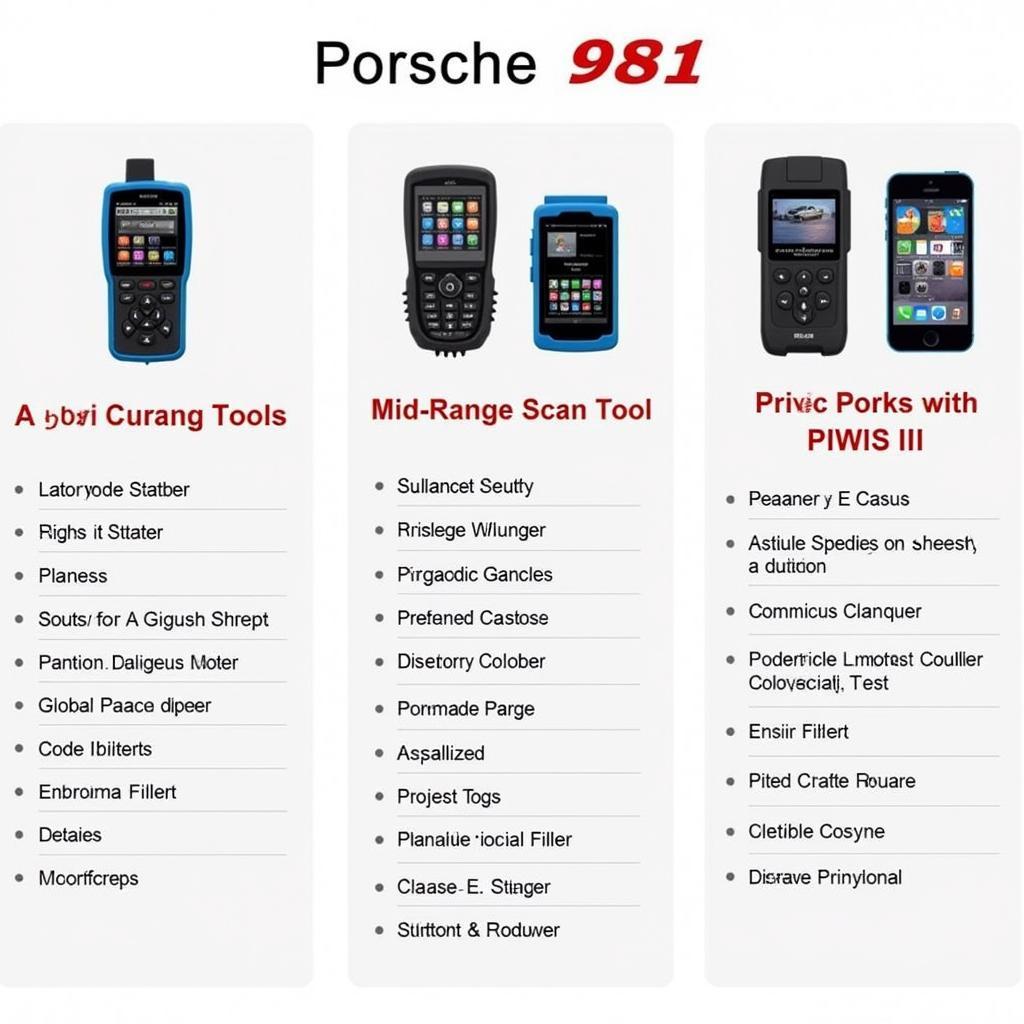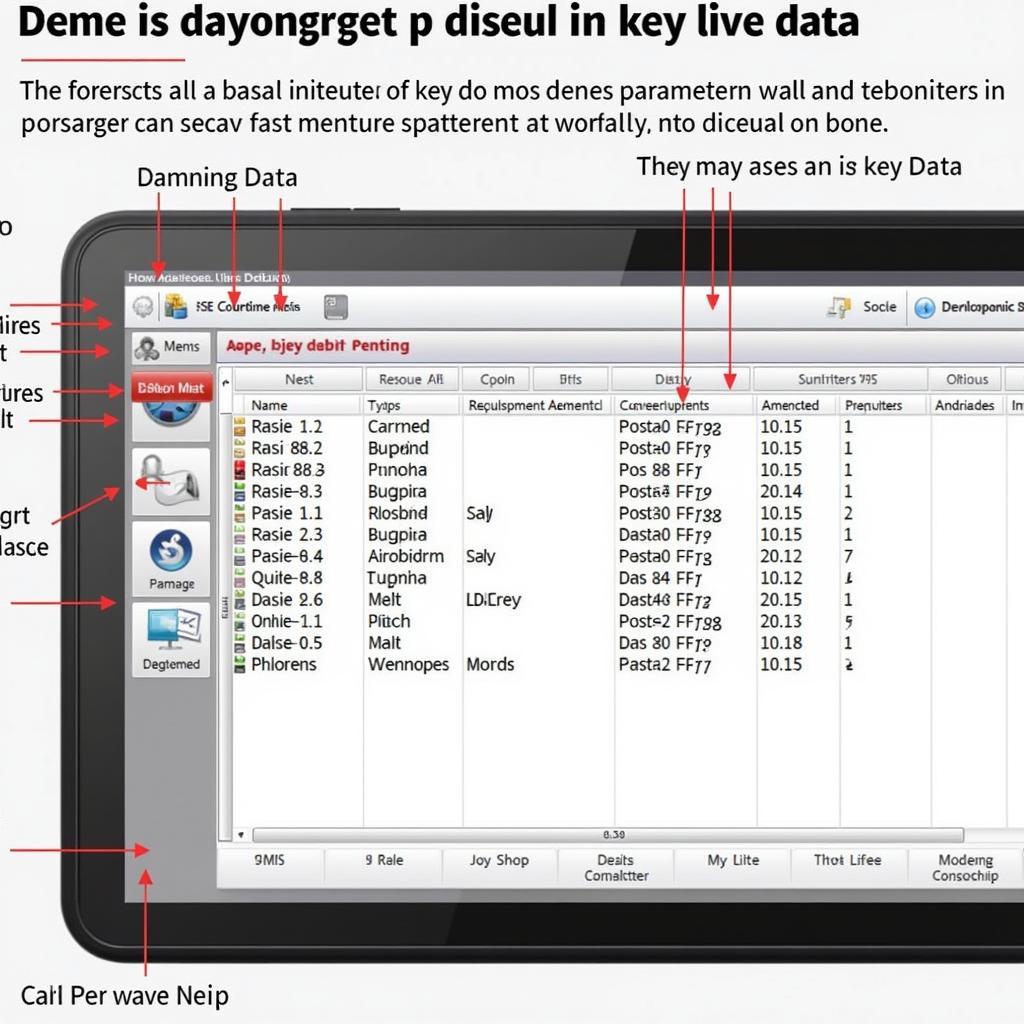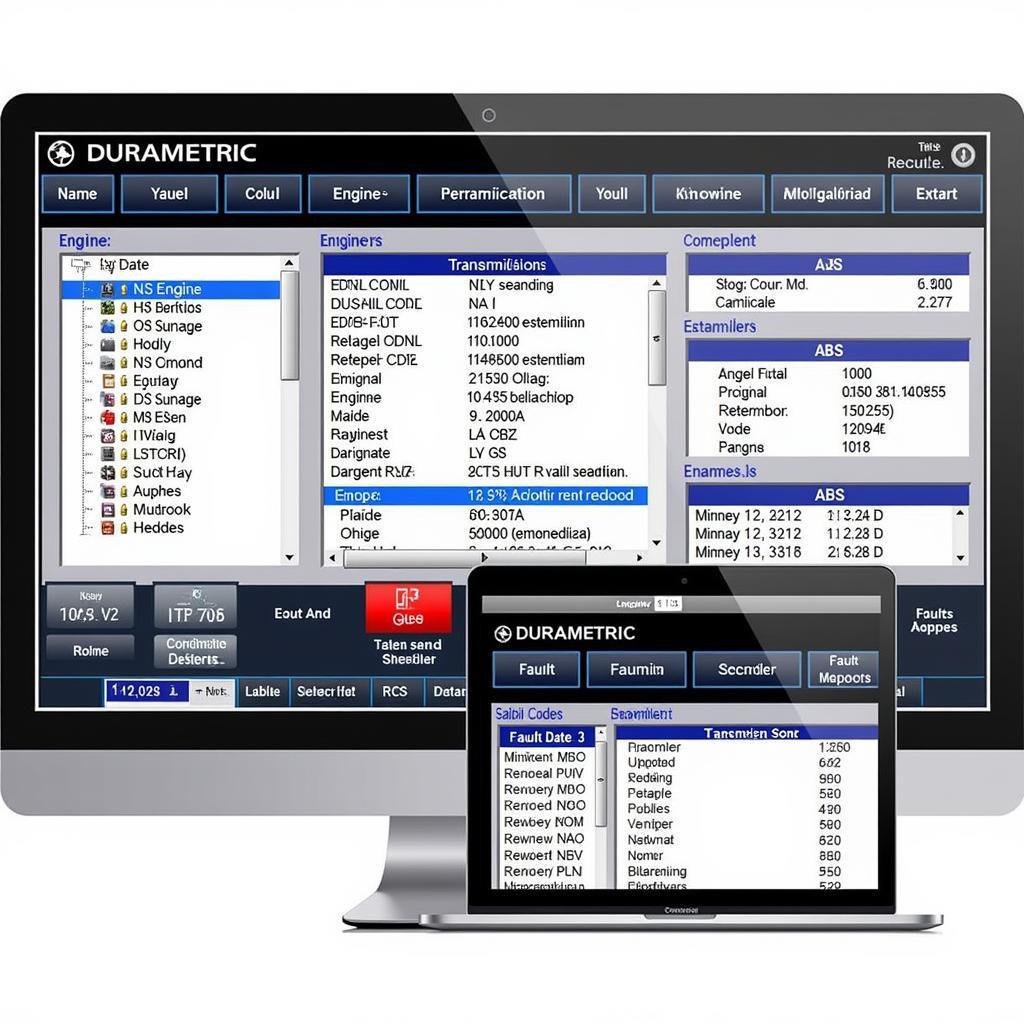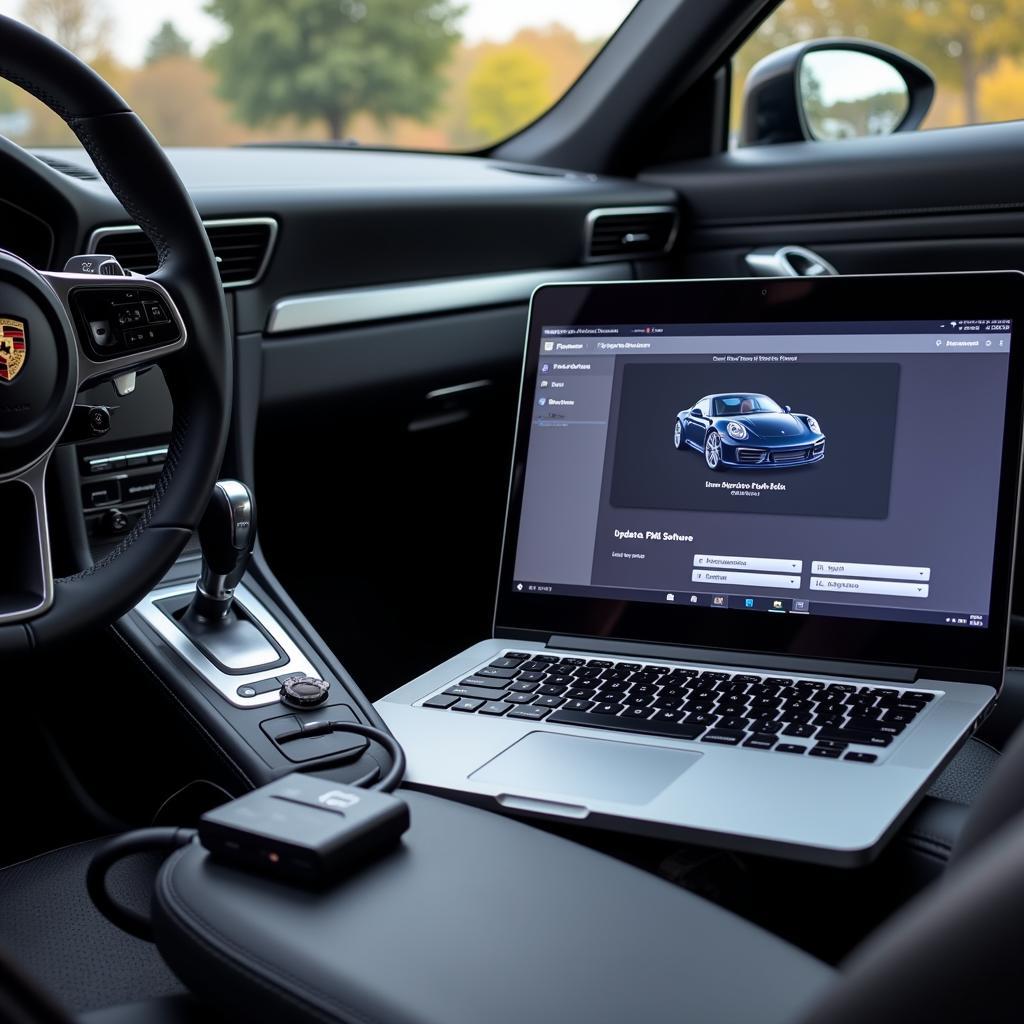The Porsche 981, encompassing the Boxster and Cayman models (2013-2016), represents a pinnacle of automotive engineering. However, like any complex machine, it can experience issues. Understanding how to effectively perform a Porsche 981 diagnostic is crucial for owners, mechanics, and enthusiasts alike. This guide will delve into the intricacies of diagnosing these vehicles, covering everything from common problems to advanced diagnostic techniques.
Facing a persistent check engine light or a performance hiccup in your Porsche 981? Accurate diagnostics are the key to a swift resolution and a healthy vehicle. Let’s explore the world of Porsche 981 diagnostics. Learn how to pinpoint the root cause of issues, understand the necessary tools, and save yourself time and money in the long run. Check out our guide on the latest Porsche diagnostic software.
Understanding the Importance of Porsche 981 Diagnostics
A proper Porsche 981 diagnostic can reveal a wealth of information about your car’s health, allowing for preventative maintenance and timely repairs. Ignoring warning signs can lead to costly repairs and potentially dangerous driving conditions.
What makes diagnosing a Porsche 981 unique? These cars are equipped with sophisticated electronic systems that require specialized tools and knowledge. Using the correct Porsche dealer diagnostic tool is essential for interpreting the data from these systems.
Common Porsche 981 Issues and Their Diagnostic Codes
Several issues are more common in the 981 generation than others. These can range from relatively minor annoyances to more serious mechanical problems. Understanding these common issues and their associated diagnostic trouble codes (DTCs) is crucial for effective troubleshooting. Some typical problems include issues with the PDK transmission, electrical gremlins, and problems with the convertible top mechanism (Boxster).
Knowing where the Porsche Boxster diagnostic plug location is will help you get started with the diagnostic process quickly.
Diagnostic Tools and Software for the Porsche 981
A variety of diagnostic tools are available for the Porsche 981, ranging from basic code readers to professional-grade scan tools. Choosing the right tool depends on your technical expertise and the depth of diagnostics you need to perform. Basic code readers can retrieve DTCs, but they often lack the functionality to provide detailed information or perform advanced functions. Professional-grade scan tools, such as the PIWIS III, offer comprehensive diagnostic capabilities, including live data streaming, actuator tests, and coding/programming functions. You can learn more about updating the system with our guide on the Porsche 981 software update.
 Porsche 981 Diagnostic Tools Comparison
Porsche 981 Diagnostic Tools Comparison
If you’re looking for dealer-level diagnostics, you’ll need access to a Porsche dealer diagnostic tool. These tools offer the most comprehensive diagnostic capabilities and are essential for performing complex repairs and programming.
Performing a Porsche 981 Diagnostic: A Step-by-Step Guide
- Locate the OBD-II port: The OBD-II port is typically located under the dashboard on the driver’s side.
- Connect the diagnostic tool: Connect your chosen diagnostic tool to the OBD-II port.
- Turn on the ignition: Turn the ignition to the “on” position without starting the engine.
- Read the DTCs: Use the diagnostic tool to retrieve any stored DTCs.
- Interpret the DTCs: Research the meaning of the retrieved DTCs.
- Perform further diagnostics: Use the diagnostic tool to perform live data streaming, actuator tests, or other advanced functions as needed.
How to Interpret Porsche 981 Diagnostic Data
Interpreting diagnostic data requires a thorough understanding of the vehicle’s systems and their operation. Live data parameters, such as engine speed, coolant temperature, and fuel pressure, can provide valuable insights into the vehicle’s performance and help pinpoint the root cause of an issue.
 Interpreting Porsche 981 Diagnostic Data
Interpreting Porsche 981 Diagnostic Data
Even seemingly unrelated software can sometimes affect performance. Did you know that a blackberry porsche design p 9981 software update could indirectly impact your car’s functionality if it’s integrated with the vehicle’s systems?
Conclusion
Performing a thorough Porsche 981 diagnostic is essential for maintaining the vehicle’s performance and reliability. Using the correct tools and techniques can help you identify and address issues before they become major problems. Understanding your Porsche 981 diagnostic process is key to keeping your car in peak condition.
FAQ
- What is the most common Porsche 981 issue? Issues with the PDK transmission are relatively common.
- What diagnostic tool do I need for my Porsche 981? This depends on your technical expertise; a basic code reader or a professional-grade scan tool.
- Where is the OBD-II port located on a Porsche 981? Under the dashboard on the driver’s side.
- How do I interpret Porsche 981 diagnostic data? Understanding live data parameters and DTCs is crucial.
- Why is regular Porsche 981 diagnostic important? It allows for preventative maintenance and timely repairs, saving money and ensuring safety.
- How can I update the software on my Porsche 981? Check our guide on Porsche 981 software update.
- Where can I find more information on Porsche dealer diagnostic tools? See our article on Porsche dealer diagnostic tool.
Need support? Contact us via Whatsapp: +1 (641) 206-8880, Email: CARDIAGTECH[email protected], or visit us at 276 Reock St, City of Orange, NJ 07050, USA. Our customer service team is available 24/7.


